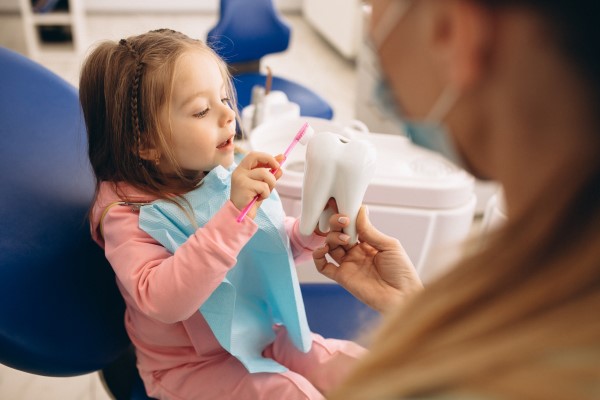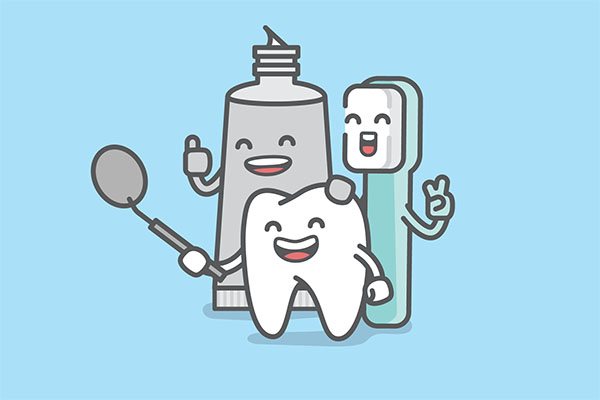Baby Root Canal: What Is a Pulpotomy?

Your child might need a baby root canal if there is trauma to the tooth. This can help to save the tooth until it naturally falls out. But you might be wondering what this root canal procedure actually involves. Keep reading to learn more about this important process.
About root canals
In every tooth, whether it is an adult tooth or a baby tooth, there is a pulpal chamber. In this compartment, there is the nerve center of the tooth. This is also known as the pulp of the tooth, and there are connective tissue and reparative cells in it. The blood vessels are also in this area.
This is what keeps the tooth alive. However, if there is decay or trauma to the tooth, then the tooth’s integrity might suffer. In this case, a pulpotomy or baby root canal is needed. This will save the tooth.
Why is it a baby root canal?
Calling it a baby root canal can be misleading. With therapeutic pulpotomies, removing the pulp ends where the root structure starts. If the pulp is not removed from the structures of the root, then it is not a root canal. However, it has been called a baby root canal for a long time now.
Understanding the procedure
Depending on how severe the injury or decay is, the child might need either a complete or a partial pulpotomy. With a partial pulpotomy, only a little bit of the pulp is removed from the child’s pulpal chamber. However, with a complete pulpotomy, all of the chamber’s pulp is removed. This is until the structures of the root begin.
As with any similar procedure, a baby root canal begins with the areas in the tooth being accessed. Once the dentist can look at the chamber, the infected pulp will also be removed. A drill is usually used for this process. Sometimes, a spoon excavator is also used to do this.
After that procedure, the dentist will then sterilize the area. This will remove any bacteria from the chamber of the tooth. Then the dentist will fill the tooth and seal it. This is usually done with a therapeutic material that has eugenol and zinc oxide. These materials can help the tooth to calm so it does not become infected. That way, the natural healing process can begin.
After the tooth has been sealed, the dentist might place a crown on the child’s tooth. This can further protect it until it comes out. The crown will usually be stainless steel. It will stay there until the tooth falls out.
Visit a dentist for a baby root canal
If a dentist recommends that your child gets a pulpotomy, it is important to do so. If the tooth is infected, it can cause serious health problems and can be fatal. With today’s medicines and techniques, the procedure will not be painful for your child. Making an appointment today is the first step for your child.
Request an appointment here: https://www.grandparkwaypediatricdental.com or call Grand Parkway Pediatric Dental at (832) 579-0960 for an appointment in our Richmond office.
Check out what others are saying about our dental services on Yelp: Baby Root Canal in Richmond, TX.
Recent Posts
Visiting a pediatric dentistry office with your child ensures his or her future relationship with oral hygiene and dentists, in general. Whenever your child suffers from oral injuries, consider making an appointment with your pediatric dentist to uncover any underlying problems. For instance, injuries to the tongue and teeth could indicate a deeper jaw or…
Fluoridated water is part of pediatric dentistry. It is a convenient and easy way to strengthen and protect teeth at an early age. Many areas have fluoridated water, which is a definite advantage. If you want to know why a dentist will likely recommend fluoridated water, here are the details.Studies show that almost all sources…
Nutrition is an important part of pediatric dentistry. Having balanced amounts of vitamins and minerals can strengthen and protect the teeth. Proper nutrients also fuel dental function. If you want to know how important nutrition is for your child’s oral health, here are the details from a pediatric dentistry professional.Children are still developing. They need…
Dental crowns are important in pediatric dentistry. Each primary tooth is a living guide for the development of permanent teeth. But baby teeth can also suffer from decay. So restoring these teeth is important for the general health of your child. If you want to know if pediatric dentistry uses dental crowns, here are the…


